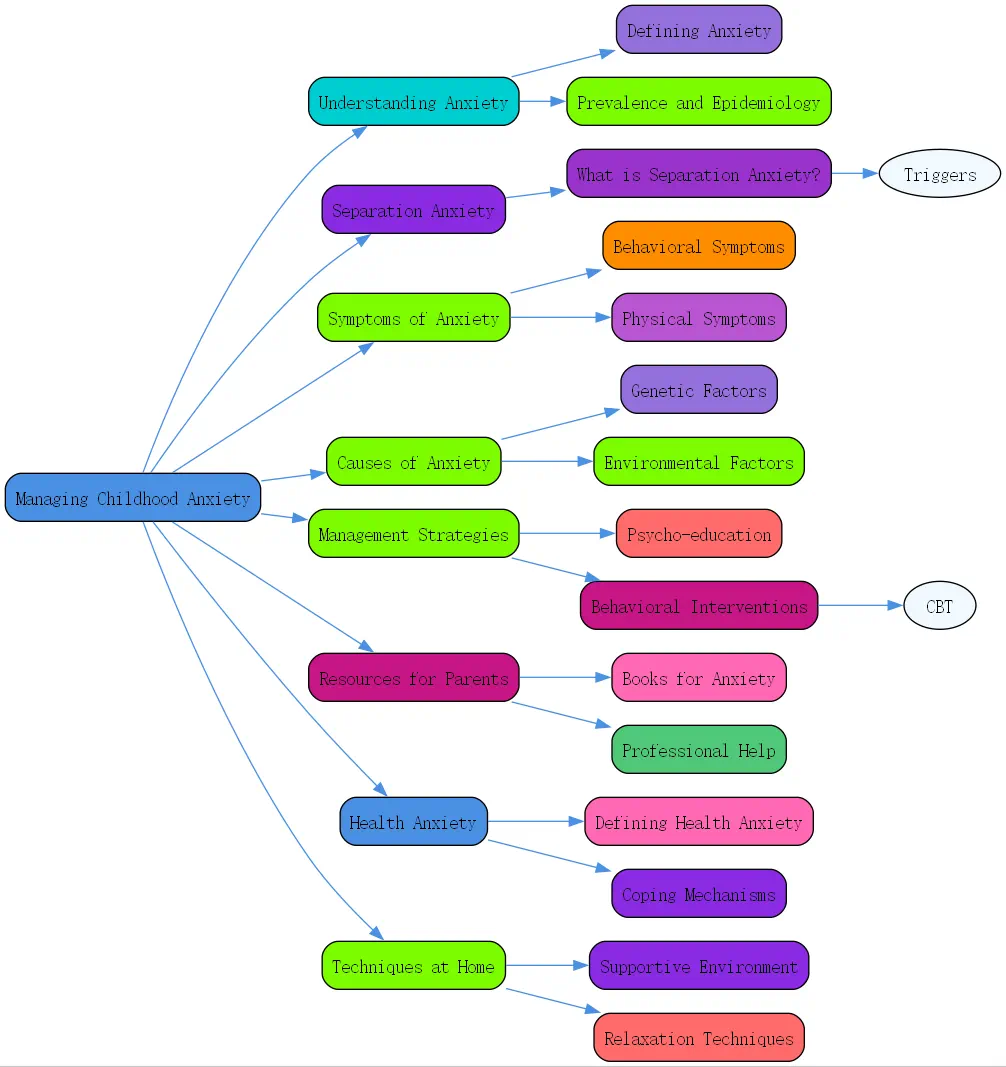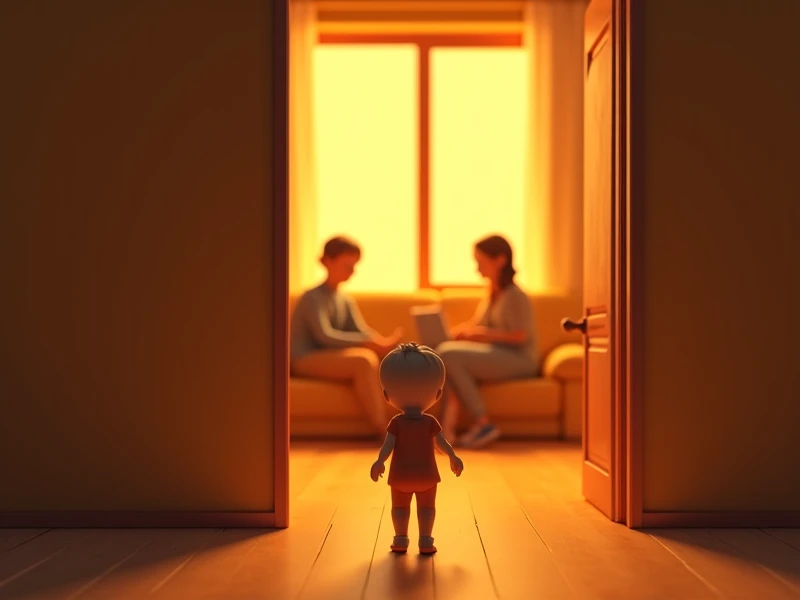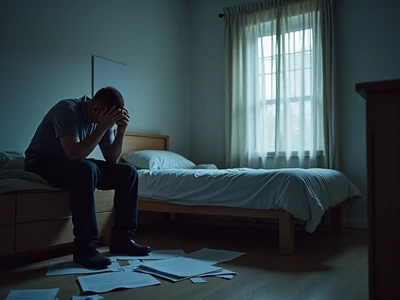Understanding Childhood Anxiety

Defining Childhood Anxiety
Childhood anxiety goes beyond typical worries. It’s a persistent fear or unease that can disrupt a child’s daily life. From fear of the dark to dread of leaving parents, anxiety shows up in many forms. While feeling anxious is normal, excessive anxiety might signal a disorder needing attention. Recognizing this difference is the first step in helping your child.
Prevalence and Epidemiology
Anxiety disorders are surprisingly common among kids. About 3 to 5 percent of children and teens experience separation anxiety disorder, one of the most frequent types. Girls tend to be affected slightly more than boys. As kids grow, anxiety often lessens, but it can spike during stressful times like starting school or facing family changes.
Types of Anxiety Disorders in Children

Children can face various anxiety disorders, each with unique traits. Generalized Anxiety Disorder (GAD) involves constant worry about everyday things. Social Anxiety Disorder brings fear of judgment in social settings. Separation Anxiety Disorder, our focus here, is marked by intense distress when apart from loved ones. Understanding these types helps tailor support effectively.
Separation Anxiety Disorder in Children
What is Separation Anxiety Disorder?
Separation anxiety disorder occurs when a child feels extreme anxiety when separated from parents or caregivers. It’s normal for toddlers to fuss when apart from you, but this disorder takes it further, disrupting their routine. It often peaks between 9 and 13 months, fades by age two, then may return around four or five when school starts.
DSM-5 Criteria for Diagnosis
The DSM-5 outlines clear signs for diagnosing separation anxiety disorder. A child must show at least three symptoms閳ユ攳ike excessive distress when apart, fear of harm to loved ones, or refusal to be alone閳ユ攩or four weeks or more. Symptoms must start before age 18 and significantly affect daily life, not explained by another condition.
Common Situations Triggering Anxiety
Certain events can spark separation anxiety. Dropping your child at daycare, riding the school bus, or staying with relatives might set it off. Big changes like moving, parental divorce, or switching schools can also trigger it. Knowing these situations helps you prepare your child and ease their fears. For more tips, see our anxiety management techniques pdf.
Symptoms and Manifestations of Childhood Anxiety
Behavioral Symptoms
Kids with anxiety often show it through actions. They might cling to you, cry during goodbyes, or refuse to sleep alone. Constantly asking for reassurance is another sign. These behaviors aren’t defiance閳ユ敄hey’re your child’s way of saying they need help feeling secure.
Physical Symptoms
Anxiety can also hit the body hard. Headaches, stomachaches, and dizziness are common complaints. Some kids feel nauseous or get muscle cramps when separation looms. Recognizing these as anxiety-related, not just random ailments, lets you address the root cause with care.
Causes and Contributing Factors of Childhood Anxiety
Genetic Factors
Anxiety often has family ties. If you’ve dealt with anxiety, your child might too閳ユ敃tudies peg genetics at 73% of separation anxiety risk. Kids with anxious parents are five times more likely to develop it. While genes play a role, they’re not the whole story; environment matters too.
Psycho-biological Factors
The brain’s fear system, especially the amygdala, drives anxiety. When it’s overactive, kids feel fear more intensely. A shy or cautious nature閳ユ攦alled behavioral inhibition閳ユ攦an also make anxiety more likely. Biology sets the stage, but experiences shape how it plays out.
Environmental Factors
A child’s surroundings can fuel or calm anxiety. Overprotective parenting, family conflict, or stressful events like losing a job can heighten it. Bullying or school pressure adds to the mix. Building a stable, supportive home can counter these risks and help your child cope.
Effective Strategies for Managing Childhood Anxiety
Psycho-education for Families
Understanding anxiety is key. Teach your child it’s a normal emotion and nothing to fear. At BrainTalking, we encourage families to learn together閳ユ攲nowing what triggers anxiety and how it feels builds empathy and reduces stigma. It’s a simple, powerful step.
Behavioral Interventions
Behavioral techniques can work wonders. Here’s how three methods help:
Systematic Desensitization
This gradual approach eases kids into scary situations. Start small閳ユ攳ike 10 minutes apart in a familiar place閳ユ敋hile teaching relaxation tricks. Slowly increase the challenge. It builds confidence step by step.
Flooding Therapy
Flooding dives right in, exposing kids to their fear fully. A child afraid of school might go for a whole day. At first, they’re anxious, but soon they see no harm comes. It’s intense but effective for some.
Contingency Management
Rewards encourage bravery. Praise your child or offer a treat for facing fears, like going to school solo. Positive reinforcement motivates them to push through anxiety over time.
Cognitive Behavior Therapy (CBT)

CBT helps kids rethink their fears. It challenges thoughts like 閳ユ发om won’t come back閳?with evidence they will. By swapping negative ideas for realistic ones, it reduces anxiety’s grip. It’s a proven, practical tool.
Additional Resources for Parents and Caregivers
Books for Managing Anxiety
Books can guide you and your child. Try What to Do When You Worry Too Much by Dawn Huebner or The Anxiety Workbook for Kids by Robin Alter. They’re packed with tips and activities to ease anxiety at home.
Online Support Groups
Connecting with other parents helps. Online groups offer tips and a sense of community. Sharing stories can lighten your load and spark new ideas for managing childhood anxiety.
When to Seek Professional Help
If anxiety cripples daily life閳ユ敃kipping school, constant physical complaints, or withdrawal閳ユ攰t’s time for a pro. A therapist can tailor solutions. Don’t wait if it’s overwhelming; help is out there.
Understanding and Managing Health Anxiety in Children
Defining Health Anxiety in Childhood

Health anxiety means a child fixates on being seriously ill, misreading normal aches as dire threats. They might obsess over their body or beg for doctor visits. It’s a tough cycle of worry to break.
Recognizing Symptoms of Health Anxiety
Watch for frequent health complaints or body-checking. Kids might ask 閳ユ穾m I okay?閳?over and over. These signs show their mind’s stuck on illness, even when they’re fine.
Effective Coping Mechanisms for Health Anxiety
Acknowledge their worry without feeding it. Distract them with fun activities. Teach deep breathing or mindfulness to calm their mind. If it lingers, a professional can step in with more tools.
Practical Techniques for Managing Childhood Anxiety at Home
Creating a Supportive Environment
A steady home cuts anxiety. Stick to a routine so your child knows what’s coming. Add downtime for play and rest閳ユ攰t’s their safe space to unwind.
Teaching Relaxation Techniques
Simple tricks soothe anxiety fast. Show them deep breathing: slow inhales, long exhales. Try tensing and relaxing muscles or picturing a calm spot. Practice together often.
Promoting Open Communication
Let your child vent. Listen, nod, and say it’s okay to feel scared. Being heard builds trust. At BrainTalking, we know talking it out can lighten their load.
- Childhood anxiety, like separation anxiety disorder, is manageable with patience and tools.
- Look for clinginess, physical aches, or school refusal as signs.
- Use gradual exposure, rewards, or CBT to tackle it.
- Learn as a family and lean on books for managing anxiety.
- Call a pro if anxiety stalls their life.
Q: What are some effective anxiety management techniques for children?
A: Helping your child manage anxiety is doable with these steps:
1. Deep Breathing: Slow breaths calm their body fast. 2. Mindfulness: Coloring or sensory play keeps them grounded. 3. Positive Self-Talk: Swap 閳ユ窔 can’t閳?with 閳ユ窔’ll try.閳?4. Routine: Predictability cuts stress. 5. Exercise: Playtime boosts mood.
Check our anxiety management techniques pdf for more!




